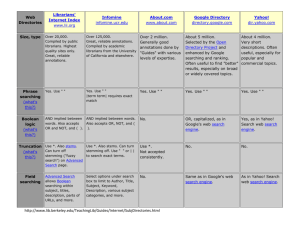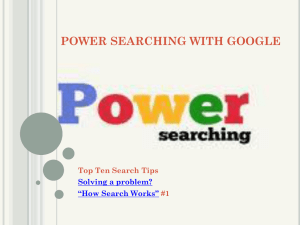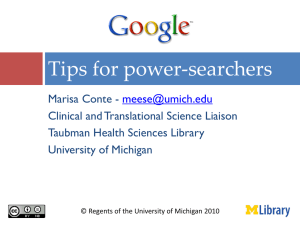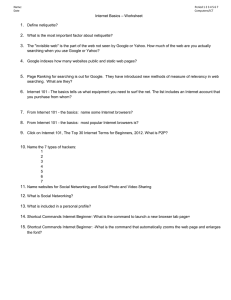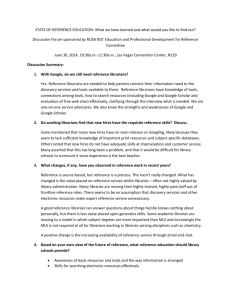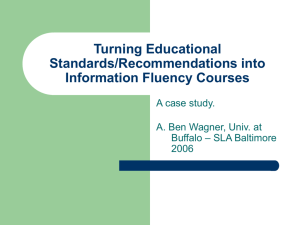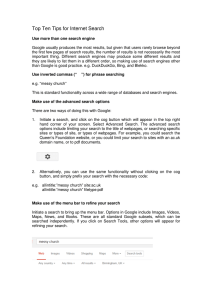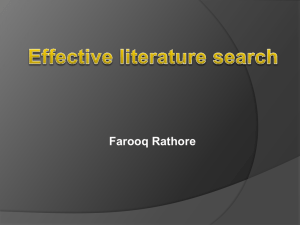Handout
advertisement
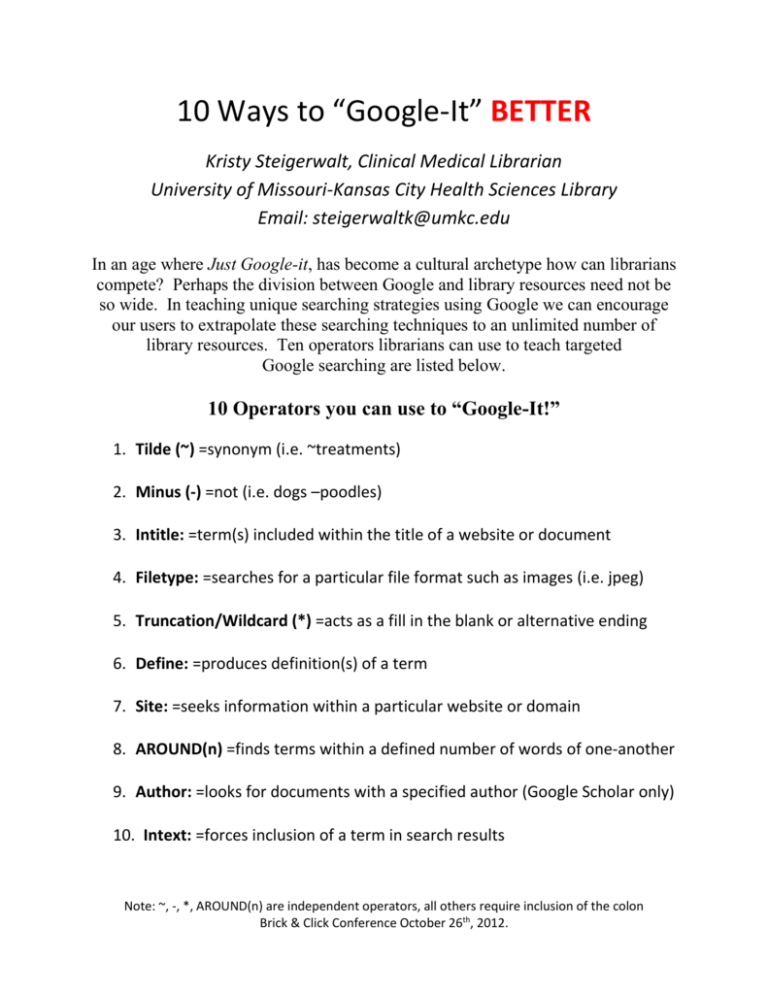
10 Ways to “Google-It” BETTER Kristy Steigerwalt, Clinical Medical Librarian University of Missouri-Kansas City Health Sciences Library Email: steigerwaltk@umkc.edu In an age where Just Google-it, has become a cultural archetype how can librarians compete? Perhaps the division between Google and library resources need not be so wide. In teaching unique searching strategies using Google we can encourage our users to extrapolate these searching techniques to an unlimited number of library resources. Ten operators librarians can use to teach targeted Google searching are listed below. 10 Operators you can use to “Google-It!” 1. Tilde (~) =synonym (i.e. ~treatments) 2. Minus (-) =not (i.e. dogs –poodles) 3. Intitle: =term(s) included within the title of a website or document 4. Filetype: =searches for a particular file format such as images (i.e. jpeg) 5. Truncation/Wildcard (*) =acts as a fill in the blank or alternative ending 6. Define: =produces definition(s) of a term 7. Site: =seeks information within a particular website or domain 8. AROUND(n) =finds terms within a defined number of words of one-another 9. Author: =looks for documents with a specified author (Google Scholar only) 10. Intext: =forces inclusion of a term in search results Note: ~, -, *, AROUND(n) are independent operators, all others require inclusion of the colon Brick & Click Conference October 26th, 2012.

